August 9th, 2022
12minute read
Shorter and lighter, but with more firepower.
During the 20thcentury, in the world of military firearms design, that became the ultimate quest.
In this M1 Carbine vs. StG44 comparison, we take a look at how these guns exemplified this concept.
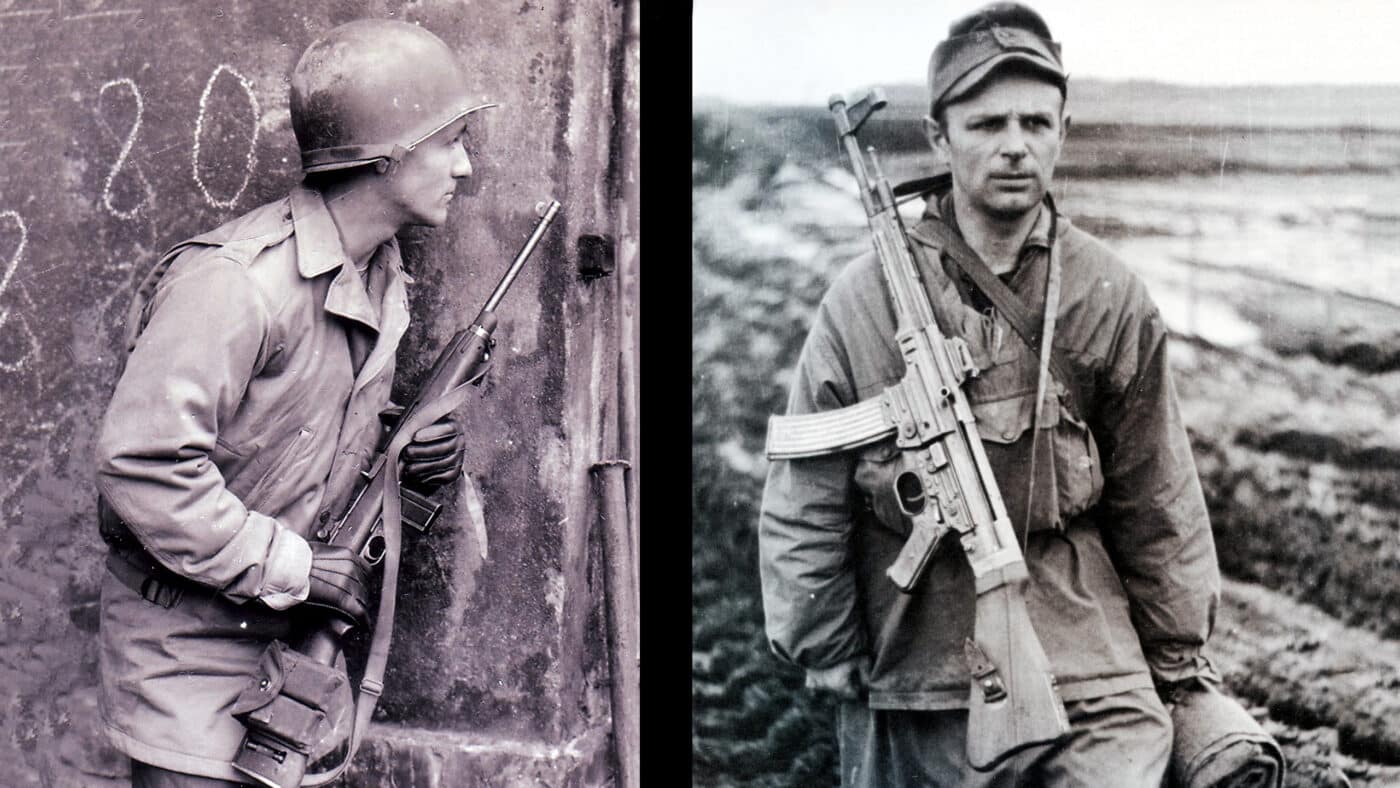
Well look at two highly influential weapons in this category that were born during World War II theU.S.
M1 Carbineand the German series ofSturmgewehr rifles.
Both addressed the same challenge, and both solved it in similar, and yet very different ways.

A New Cartridge
The search for a new cartridge began shortly after World War I. German designers experimented with some new intermediate cartridges, while America flirted with the.276 Pedersen.
Neither achieved any great traction as U.S.
Ordnance moved towards the semi-autoM1 Garand rifleand the Germans revised their standard Mauser rifle to theKarabiner 98k.
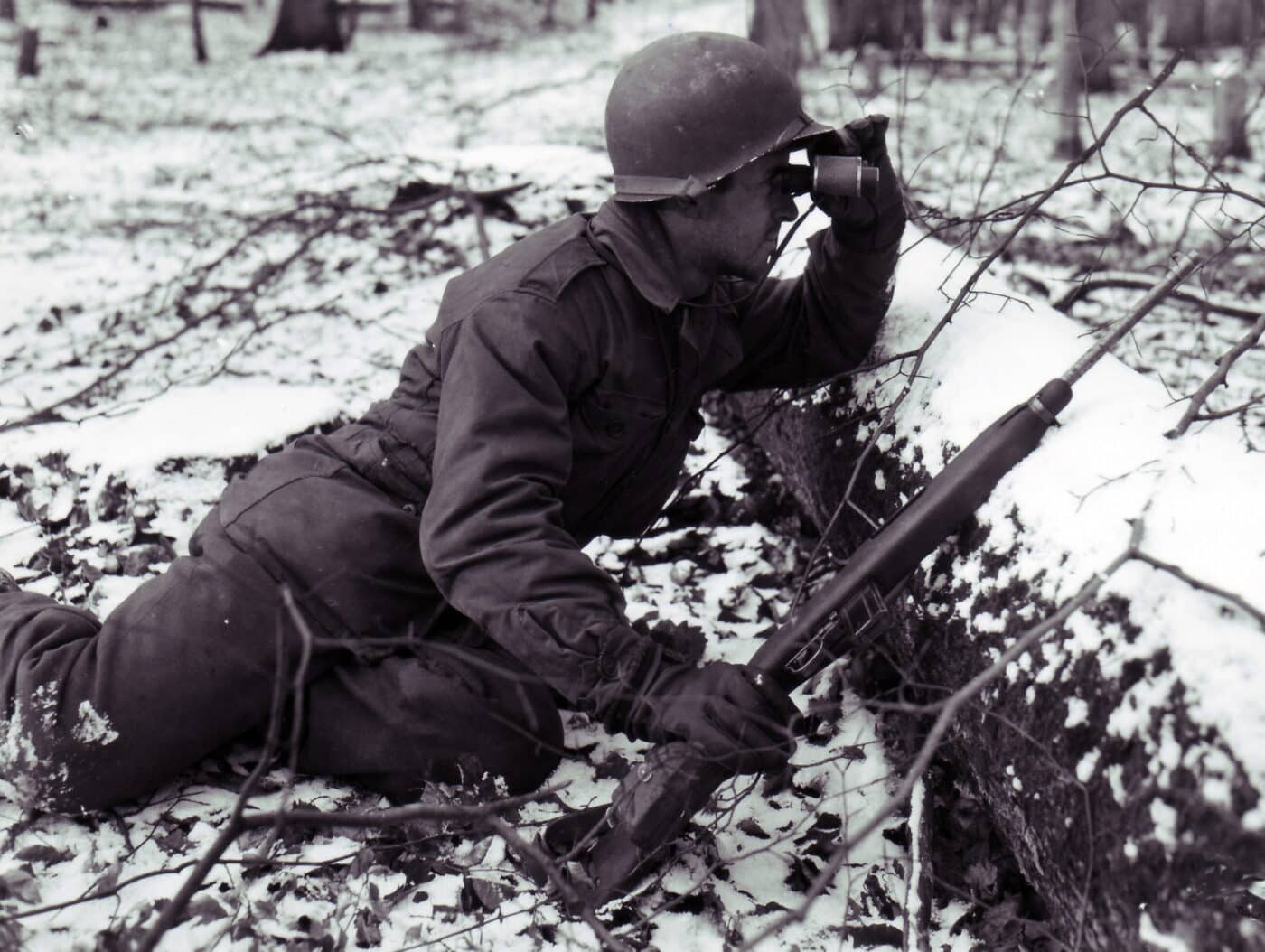
Both rifles, chambered for the standard cartridge of their respective nations, would eventually rise to icon status.
The onset of World War II would accelerate their development.
Imagine then the challenges faced by the firearms design teams that actually had to work for Hitler.
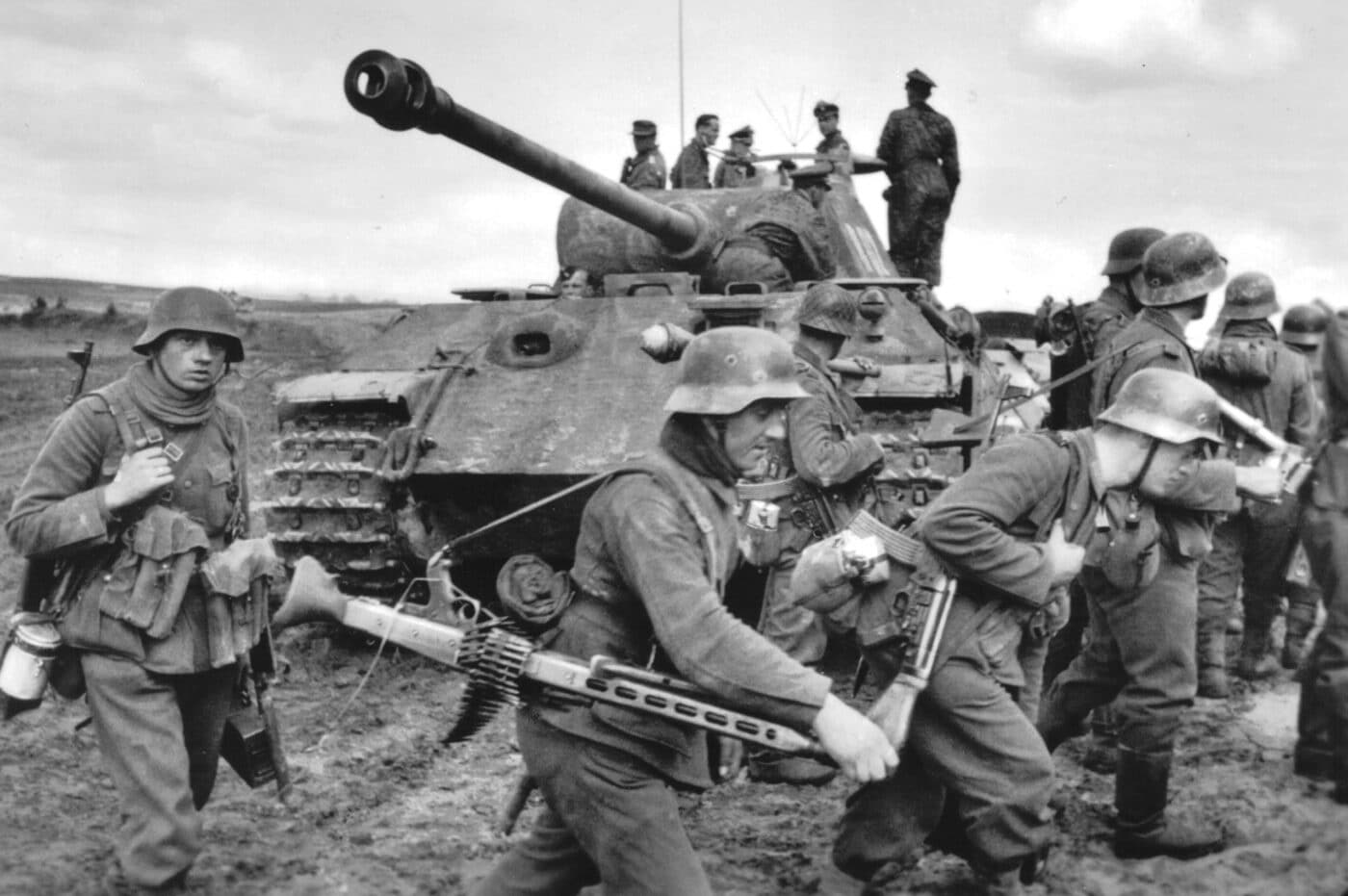
By 1942, Germany was mired in a bloodbath campaign of epic proportions on the Eastern Front.
Whats in a Name?
Development continued until financial concerns and departmental infighting became evident, and Hitler intervened.
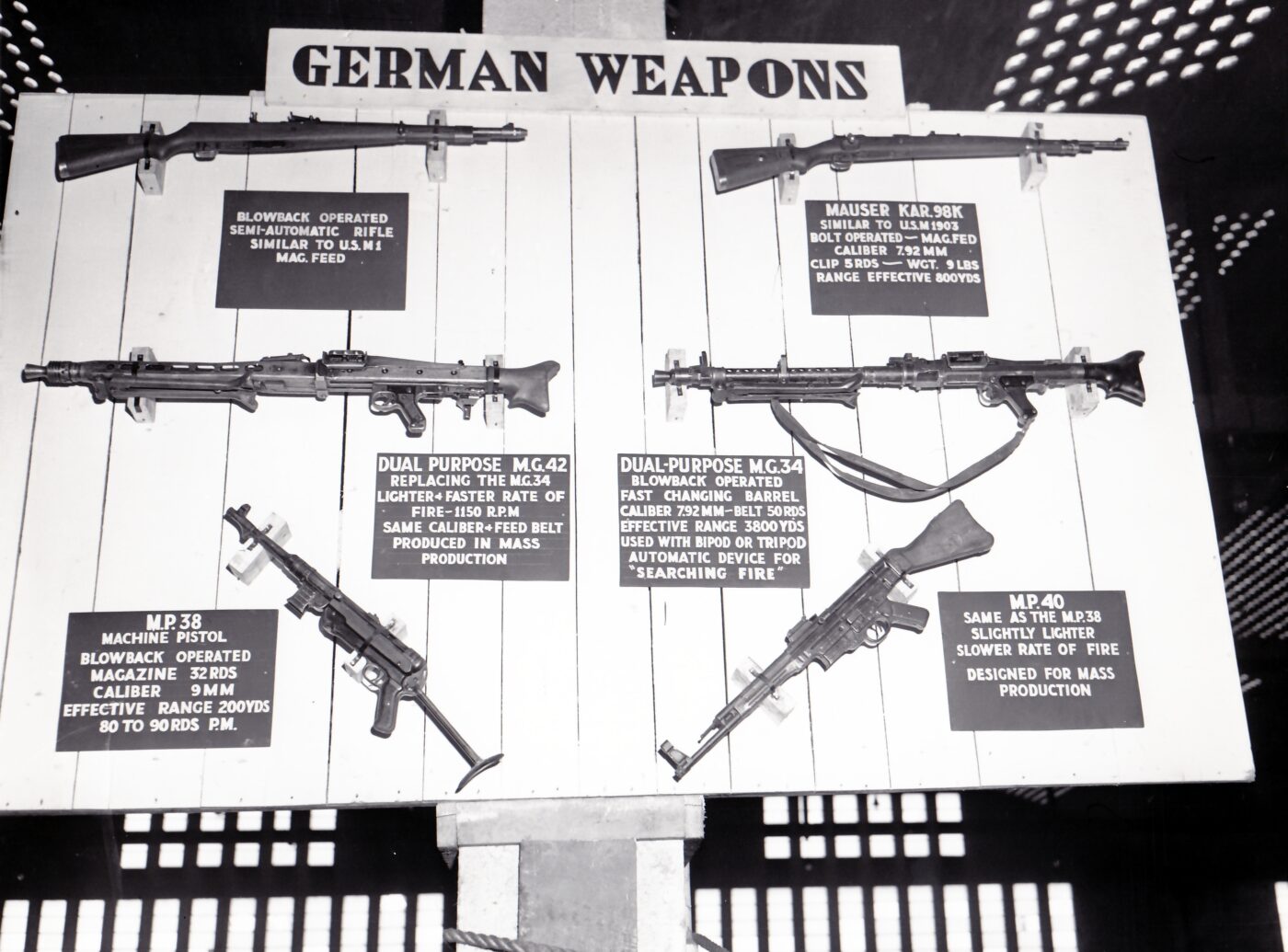
Consequently, all new rifle development projects were put on hold.
That is how the new weapons system became the MP43, or Machinen Pistole.
Issued in small numbers to troops on the Eastern Front, the MP43s were successful and popular.
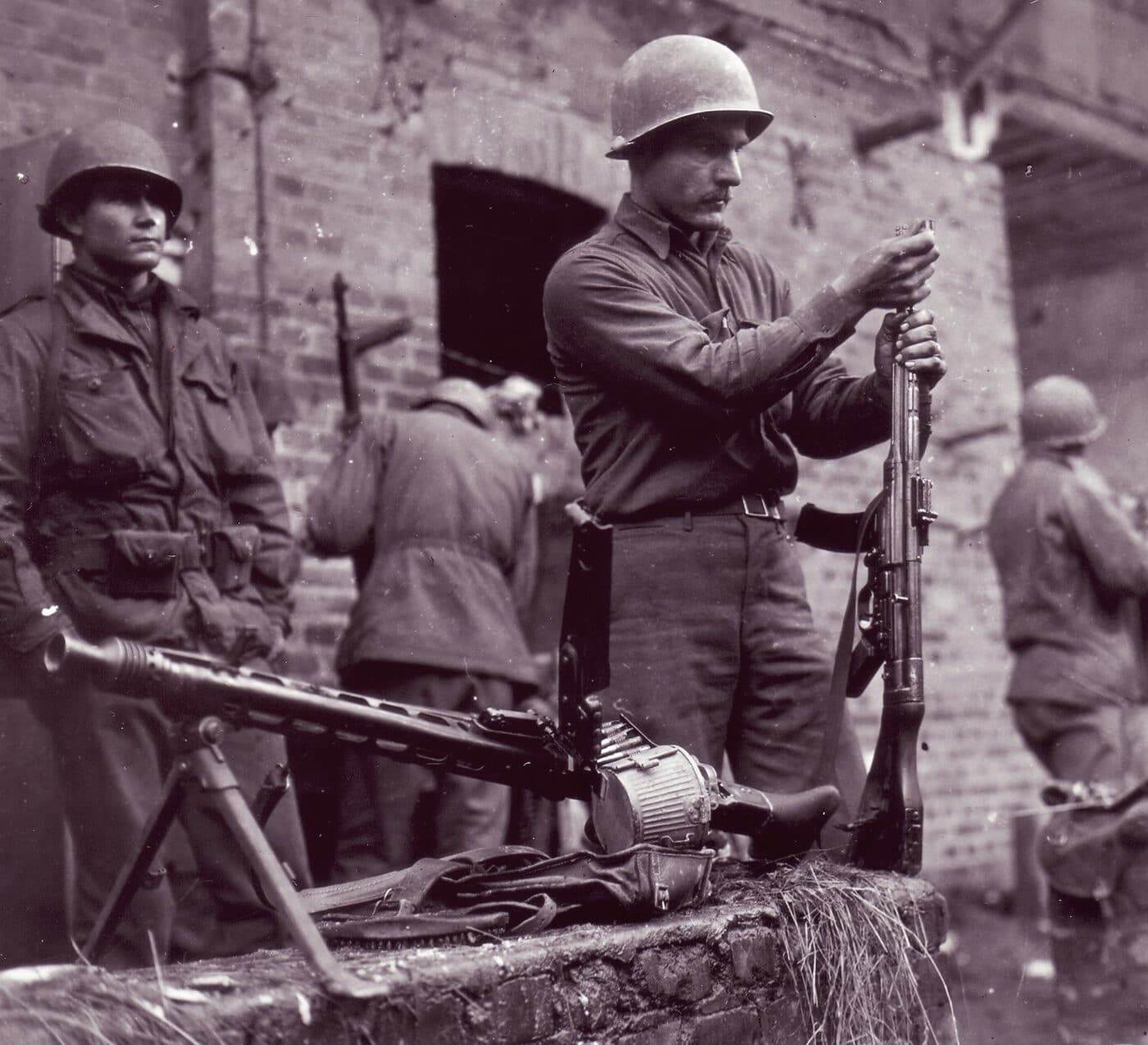
The MP43 functioned well and then began wider production and distribution as the MP44.
Hitler finally watched a demonstration of the MP44, and the old infantryman was delighted with what he saw.
The Fuhrer himself is said to have coined the term Sturmgewehr, and it stuck, finally and officially.
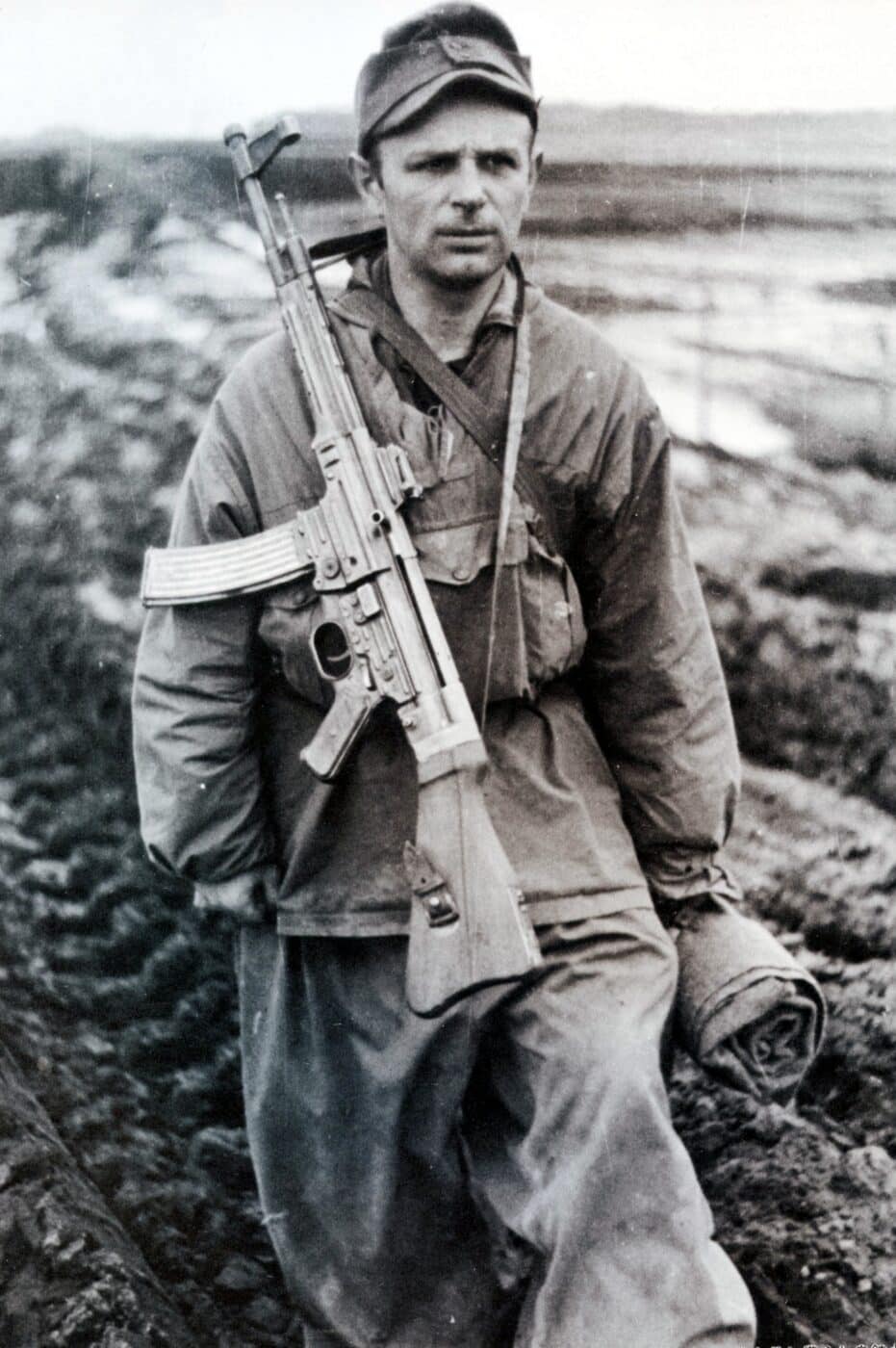
The MP44 became the Sturmgewehr 44 (StG44).
Until the early 1960s, American documents about the StG44 called it a submachine gun.
Ordnance slapped this same term on the Soviet AK-47, a rather famous and similar-looking descendant of the StG44.
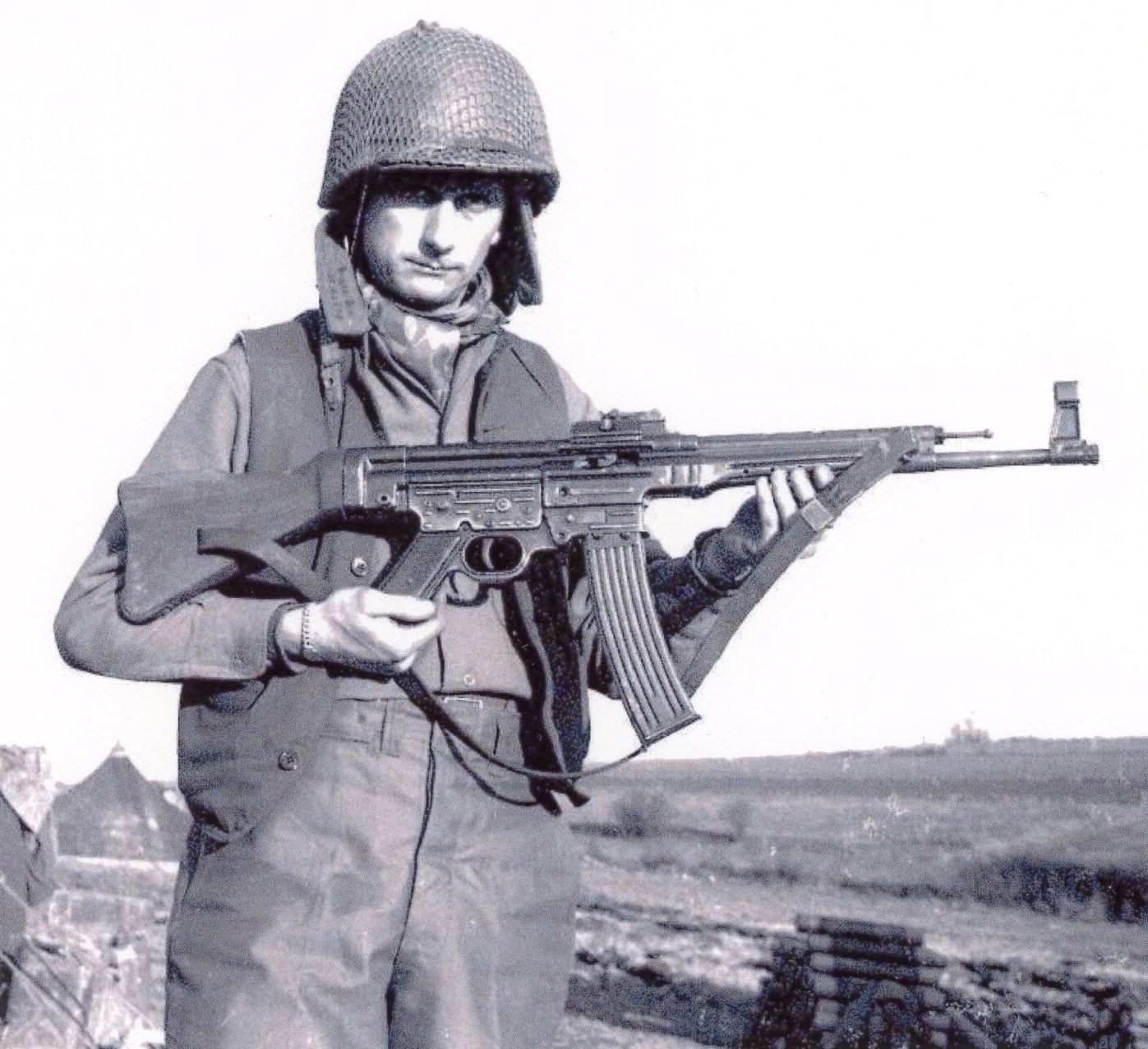
Officially, the initial U.S.
Ordnance reviews of the MP43/MP44 judged it to be a poor weapon.
Anecdotal evidence from G.I.s in the field was rather different, though.
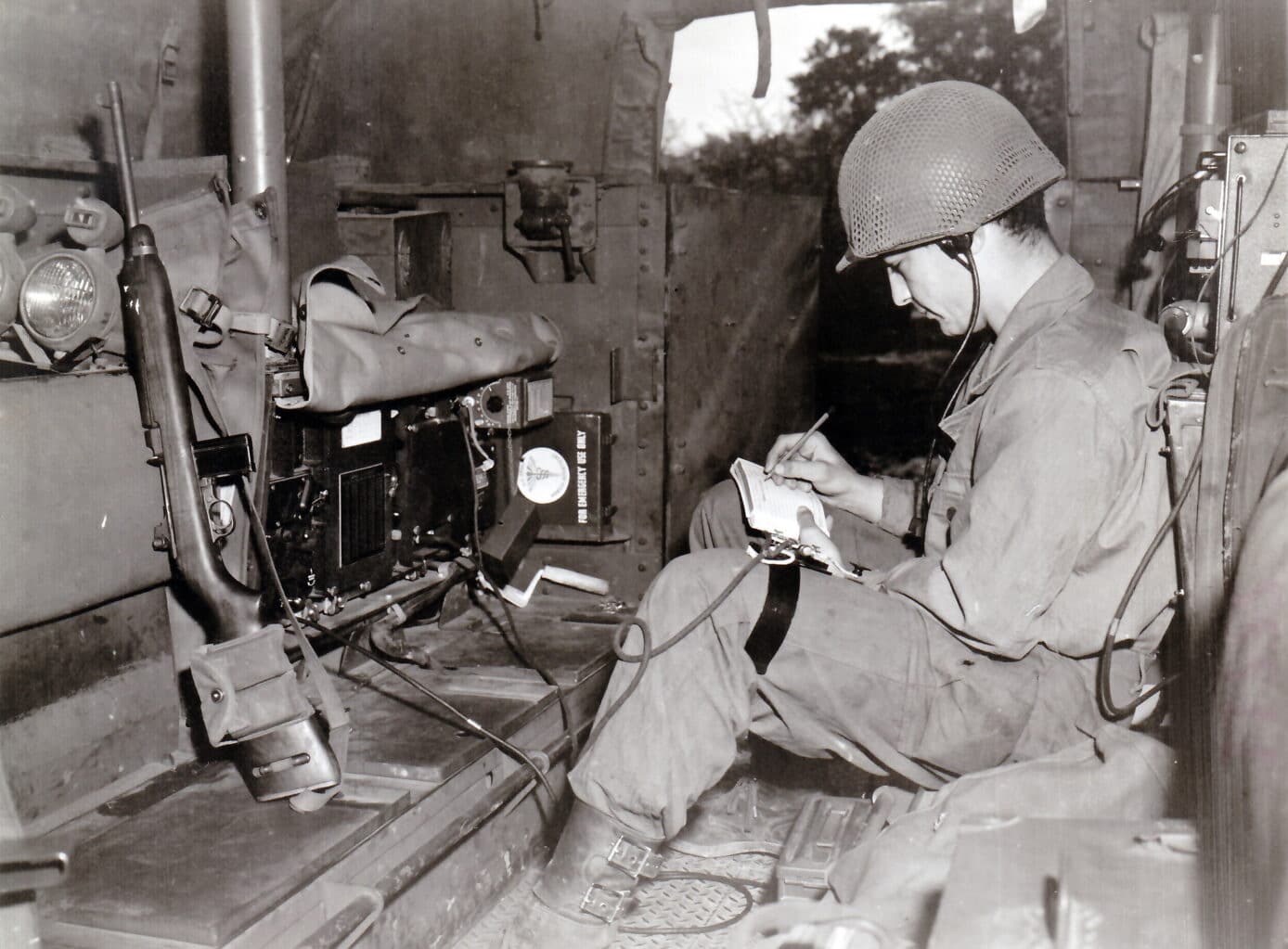
W.H.B Smith took a more open-minded view of the Sturmgewehr.
It was originally listed by the Russians as a Machine Carbine.
British reports also gave it this identification.
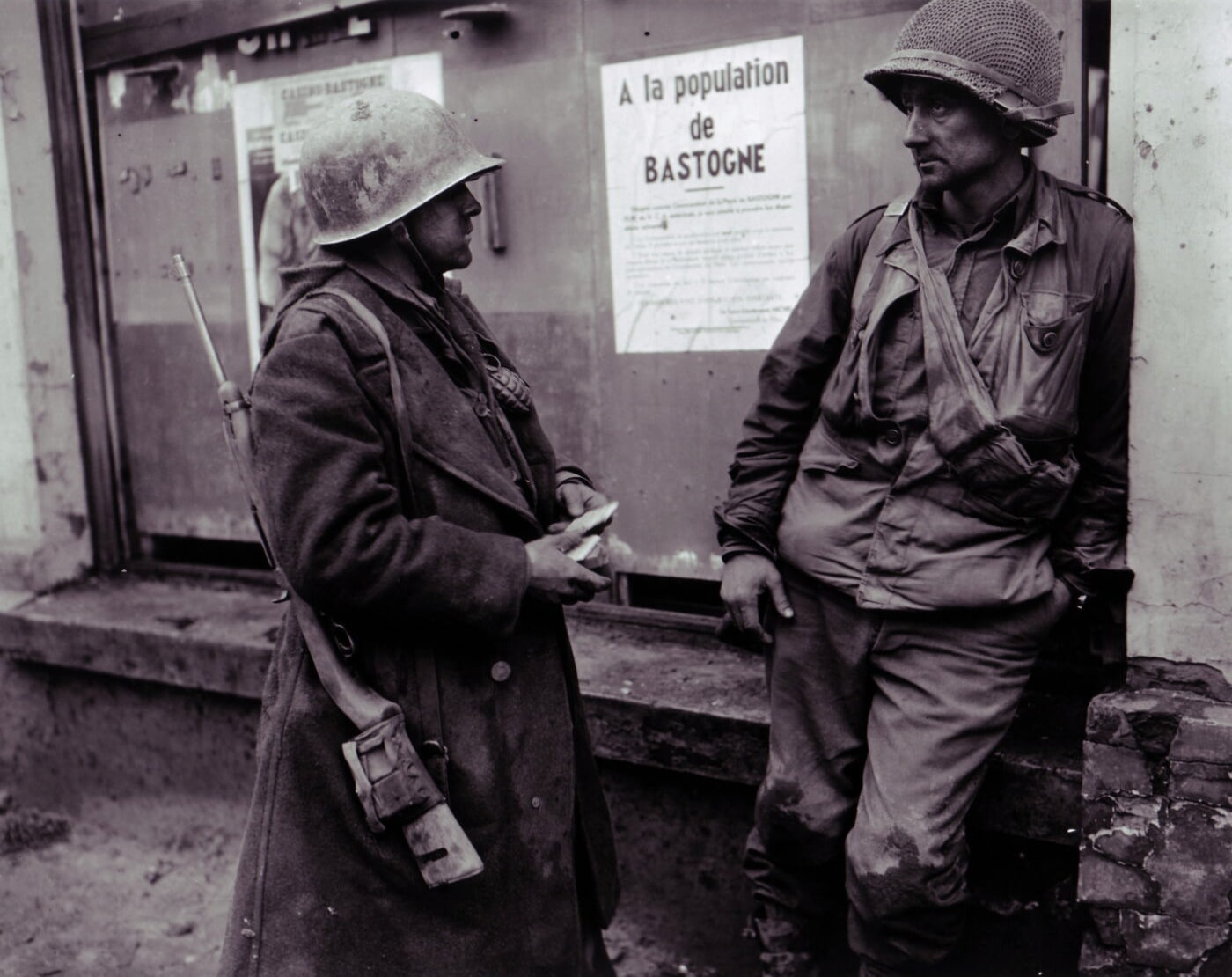
The stampings themselves have been designed to provide a maximum of reinforcement.
Muzzle velocity of some 2250 fps results in good accuracy at effective ranges.
While the Germans called the design a Machine Pistol, it is adapted only to carbine use.
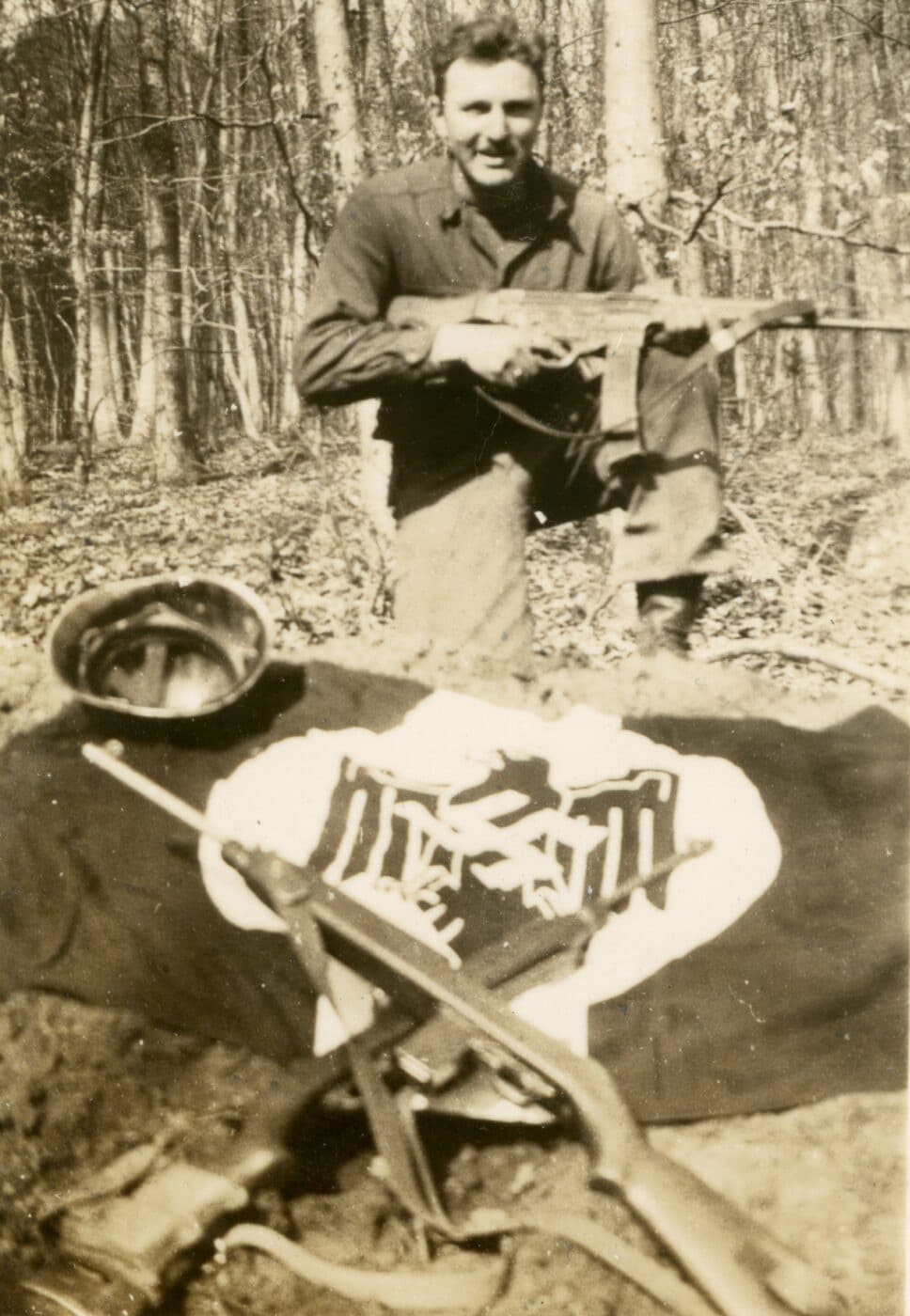
Receiver, jacket, frame and front sight hood are all stampings.
Only the piston assembly, gas cylinder, barrel and nut, bolt and hammer are well machined.
The stock is cheaply constructed.
The forerunner of this design was the Maschinen Karabiner (M.K.42) used against the Russians.
The first form to appear against our troops was the MP (Maschinen Pistole) 43.
Modifications were issued as the MP43/I and MP44.
The last named was designed to permit use of the standard German rifle grenade launcher.
Directives issued by the Germans in 1944 ordered semi-automatic use only, except in cases of emergency or opportunity.
Ordnance was interested in developing a modern carbine (light rifle) as early as 1938.
The new .30 Carbine ammunition was a development of the .32 Winchester self-loading rifle cartridge.
Used in a rifle that weighs less than 6 lbs.
A folding-stock variant (the M1A1) was soon developed to meet the needs of paratroops.
But the M1 Carbine suffered from a widespread misunderstanding of what the little rifle could do well.
On full auto, the Carbine cycles at nearly 750 rounds per minute and is very controllable.
It was light and handy, powerful, and reasonably accurate.
It was flat shooting enough to have practical accuracy at more than two hundred yards.
It would be interesting to know how many casualties it created during the war.
Certainly more than all the pistols and revolvers our military has ever used.
The great advantage was that it got a gun that could shoot into the hands of the average infantryman.
The carbine performed moderately well in the hands of dubs.
The rest are all too heavy for the job they do.
The M1 Carbine has the more elegant, traditional look of wood and steel.
The StG44 cemented the image of the new wave of utilitarian, stamped-steel assault rifle designs.
During World War II, the need for infantry firepower grew greater with each battle.
The M1 Carbine was often found wanting in effective range and penetrating power.
However, their detractors never outnumbered their proponents, and both weapons served their owners well.
Both have soldiered on since 1945.
American troops carried them in the Korean War and in the early stages of the Vietnam War.
This same outcome would not be possible with a StG44.




